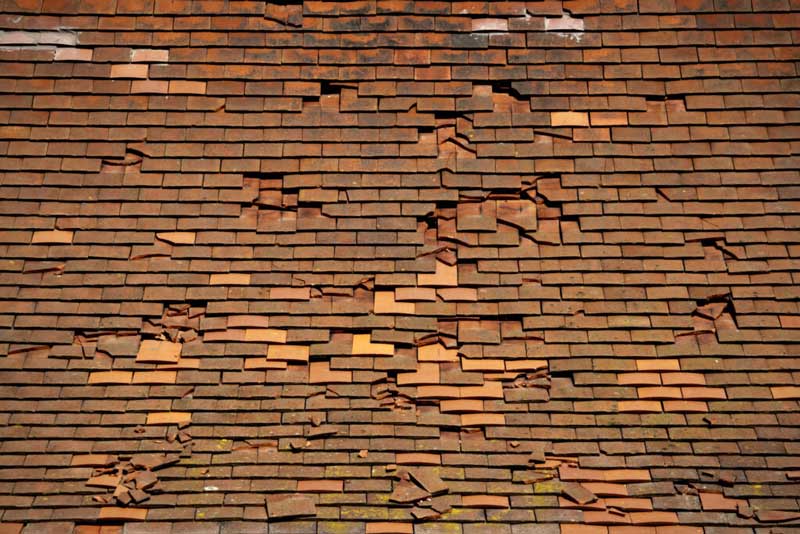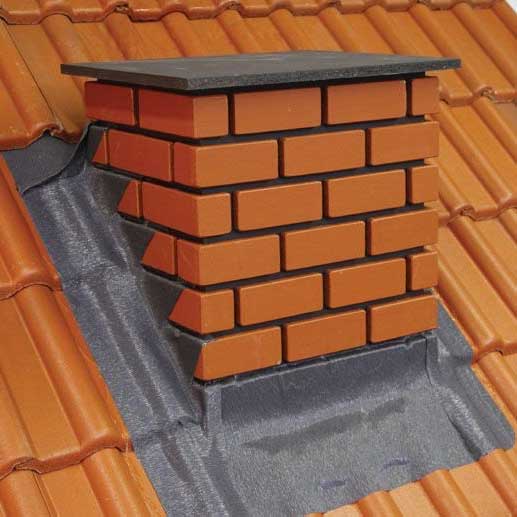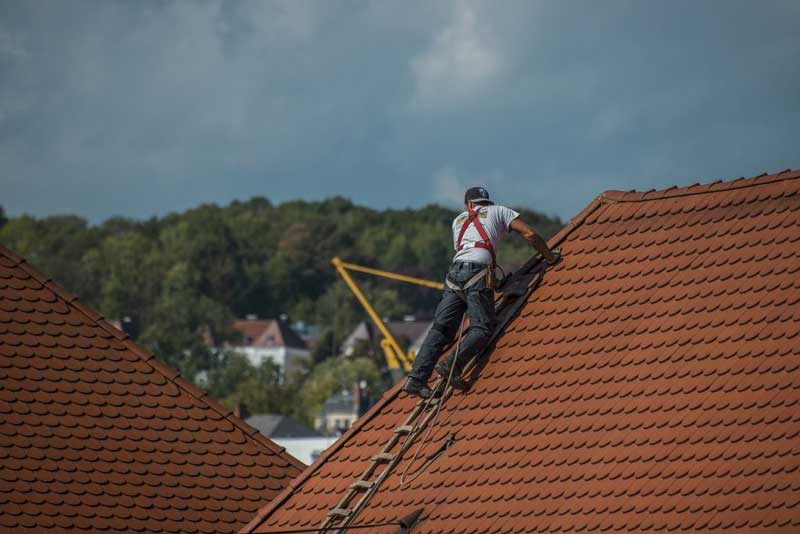In Britain, we’re no strangers to heavy rain. So, when a storm is on the horizon, you might have to keep an eye out for the issues that come along with it. If you’ve recently had to deal with a storm and found storm damage to your roof, you’ll need to do several things to sort that out as soon as possible.
Table of contents
How do I know if my roof has storm damage?
Firstly, you must try to reduce your panic as this can risk rash decisions being made. Secondly, do not attempt any outside activity until the storm has passed as this can put you or others on the property in danger.
Here are some other things you must follow to keep yourself safe following the storm:
- Do not touch electric or telephone cables that have been blown down or are hanging in place.
- Steer clear of walls, buildings and trees as the structures could have been weakened.
You can find out more about staying safe during the storm via Met Office.
Now onto identifying roof damage!

Roof damage caused by the rain
With any storm comes rain and with rain comes the potential for flooding or leaks. Any rooms at the top of the property, most likely loft or attic areas, would have likely taken the brunt of the damage. So, look there first and see if there are any minor or major leaks.
Large holes in the roof will be more obvious if debris, such as a tree branch, has made an impact on the roof during the storm. Do check for smaller holes too as they can also cause damage in the long term. You might also have to remove insulation from the underside of the roof to find any sneaky leaks hiding away.
The leaks, if not dealt with as soon as possible, can also lead to different issues that are both health and structural hazards:
Rotting of the roof rafters can lead to a weakening of the structure keeping the roof lifted over time and, if left too long, can be a costly and difficult fix.
Exposure to the elements can cause dampness, which in turn leads to mould, moss or algae growth; especially if you have any kitchen or bathroom spaces at higher levels on the property.
Tip: Use buckets or similar containers to catch any water leaking into the property and put protective sheeting (preferably plastic) over any valuables nearby to keep them from getting wet.
Roof damage caused by the wind
The wind is another nemesis you’ll have to deal with. Most likely your roof will have been damaged by the wind and so you will need to identify a few things that are common when it comes to wind damage.
When exposed to high winds, the typical damage will be that of roof tiles or roof shingles coming loose and falling off. Not only is this structural damage but it can also be very dangerous to those standing outside the property. So, you must not leave the inside of the property during the storm to make sure you and others are safe.
During the inspection, you will also need to check whether any debris has fallen onto the roof. This can be anything from tree branches to other roof features from neighbouring homes that have also blown off and made their way over to your property.
Roofs can blow off if the force of the wind is strong enough. So, you will need to make sure you get this fixed as soon as possible to keep those on the property safe. Whether that may be a commercial or domestic setting.
Roof damage caused by hail
Although more likely in freezing temperatures, keep an eye out for hail. These frozen droplets of rain can do even more harm to the property because of their solid form.
Your roof tiles will not be unscathed from these types of storms. Holes and dents will likely be apparent, which only furthers the risk of water making its way into the property and causing mould to grow. Obvious signs of damage can also be in the form of scratches, tearing and abrasions.
Do keep in mind some of the damage might be more subtle. So, you must look close enough at the tiles to make sure nothing is missed.
What to do after storm damage
Once you’ve identified the damage, you have options ahead of you to make sure your roof damage is dealt with as soon as possible.
Make smaller repairs yourself if possible
Some damage can be easily dealt with if you have the experience of doing so; especially if it’s securing loose gutters, repairing the flashing or other common roof problems with easy fixes.
You might have to clean your roof tiles if dirt, moss or algae has built up too!
Flat roofs also need some love. Find out what the common flat roofing problems are and how to fix them, as well as how to waterproof them for the future with our flat roof buyer’s guide.
If your property has a conservatory, check out how to fix a leaking conservatory roof.

Contact your nearest roofing service
If the damage is extreme and you are not familiar with repairs, contact your local roof repair service to help you identify the damage and help with the repairs.

Check your insurance to see if you can claim
Affordability might be one of the first things on your mind. Rightly so, as roof repairs come with a hefty price tag.
You might be wondering:
Are roof tiles covered by building insurance?
Luckily, storm damage to a roof – including the roof tiles – is typically covered by building insurance. However, this will depend on the provider. So, you must check your policy documents or with the provider to confirm your coverage options.
To make the process easier, note down the damages so you can highlight points that will need repair.
Look at the warranties (if any) for products on the roof
Some products used in the construction of the roof might have warranties attached. From tiles to guttering to insulation, there’s a plethora of materials you can investigate to see if there is any chance for replacements. It’s important to note, however, that not all warranties cover weather damage. So, be sure to contact the manufacturer if you are aware that the materials have recently been installed and damaged within the warranty time.
Final thoughts
With extreme weather becoming more and more common, we all have to deal with roof storm damage occasionally. Luckily, there are a few things you can do to avoid the worst.
To summarise:
If a storm damages your roof, the first step is to ensure your safety and that of your family. If there are any immediate dangers like electrical hazards or structural instability, evacuate the area and call emergency services if necessary.
Next, document the damage with photographs for insurance purposes. Contact your insurance company to report the damage and initiate a claim. Temporarily cover any exposed areas with tarps or plastic to prevent further water intrusion.
Finally, consult with a professional roofing contractor to assess the extent of the damage and get a repair or replacement estimate.

















